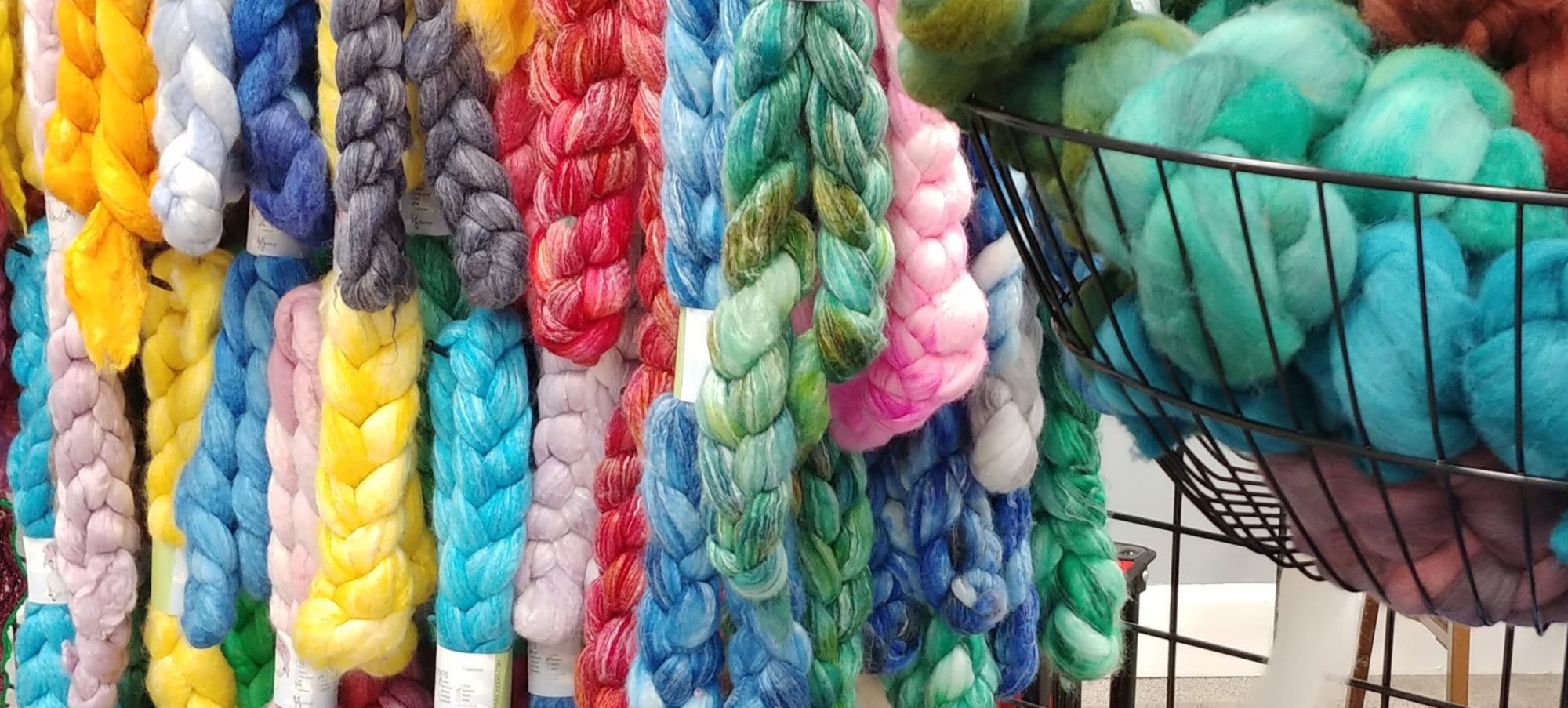
Hello fellow spinners!
It’s time for me to stop talking about wanting to do a newsletter and start writing a newsletter! I’ve been spinning for a long time now, about 30 years. I got my first spinning wheel for Christmas the first year on the NJ farm. My then husband gave me an Ashford Traveler and told me that he wanted a wool sweater from one of the sheep in the yard. Not to be defeated by a box of kindling, I stained and built the wheel and did a pretty good job! Along with the wheel, I received The Joy of Spinning by Marilyn Kluger. I do not recommend learning to spin from a book, but it certainly is doable. Pictures in a book do not convey the same clarity as a YouTube video, or much better, a one-on-one experience. After a frustrating couple of weeks I started to ‘get’ it and then found a small shop about an hour away where I was able to take a lesson. The “aha” moment happened and I was hooked!
Thirty years later, spinning still holds the same wonder for me as it did when I was learning. The drafting triangle is a magical thing and watching the twist enter the fibers is fascinating and never fails to enchant me all over again! It is where all the action takes place and where your final yarn is born. I am still as amazed now as then at how a little twist in fiber holds it together so you get a continuous strand of cotton, wool, linen, etc. You know you are around the bend when you are looking for the ‘cotton’ in a pill bottle so you can spin it, or you start eyeing your neighbor’s long haired cat and setting out food by your door to attract her!
I will use this space to talk about spinning on wheels and spindles, fibers, and techniques. I welcome suggestions on topics that you are interested in; the more interactive the better. Since this is the first of many, we will start at the beginning…with spindles.

The earliest known spindles date to about 5,000 BC, although people have been handspinning for at least 10,000 years. For comparison, the wheel (not the spinning wheel) was invented about 3,500 BC. Spindle whorls have been found in the Middle East, probably the origin of spinning, Troy, Cyprus, Ur, and Peru. They appear in England during the Bronze Age, about 2,500 BC. Civilization could not begin until spinning was developed.
Spindles are so ancient and important that they figure into legends and myths. They are mentioned in the Bible, Sleeping Beauty, Rumpelstiltskin, and the Navajos’ Spider Woman. Arachne, a mere mortal, challenges the goddess Minerva to a spinning and weaving contest and is turned into a spider for her efforts. The Three Fates Spin the thread of life, measure, and then cut it.

It amazes me to realize that hand spinning has been around for at least 10,000 years but the spinning wheel was not introduced in Europe until the late Middle Ages or early Renaissance, c 1400. So for more than 9,000 years of our western culture the hand spindle was the ONLY tool used to spin ALL the thread for all fabric; household linens, clothing, blankets, wall hangings, tents, banners, sails, etc. Think about the shear variety of fibers this encompasses: everything from the finest Egyptian mummy cloths to sails on ships! Every time I begin to spin on a spindle or a wheel I feel that I would not be surprised if I closed my eyes and when I opened them I was in a different time and space with multitudes of other spinners. The clothes and spoken languages might be different, but the language of spinning would be and still is the same through all the ages!
Think about this the next time you spin on a spindle or a wheel!
Suggested Reading:
Franquemont, Abby. Respect the Spindle. Interweave Press. 2009.
Gibson-Roberts, Priscilla A. Spinning in the Old Way. Nomad Press. 2006.
Hockberg, Bette. Handspindles. Hochberg & Hockberg. 1977.
Wayland Barber, E. Women’s Work: The First 20,000 Years. WW Norton & Co. 1994.
—Ginger C.
